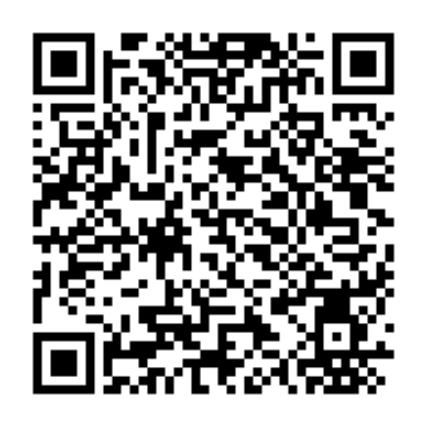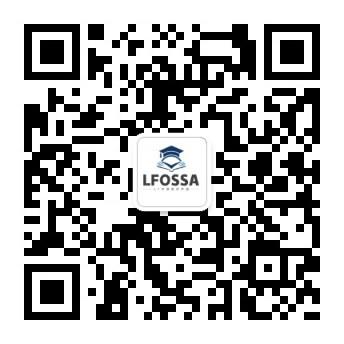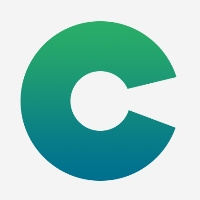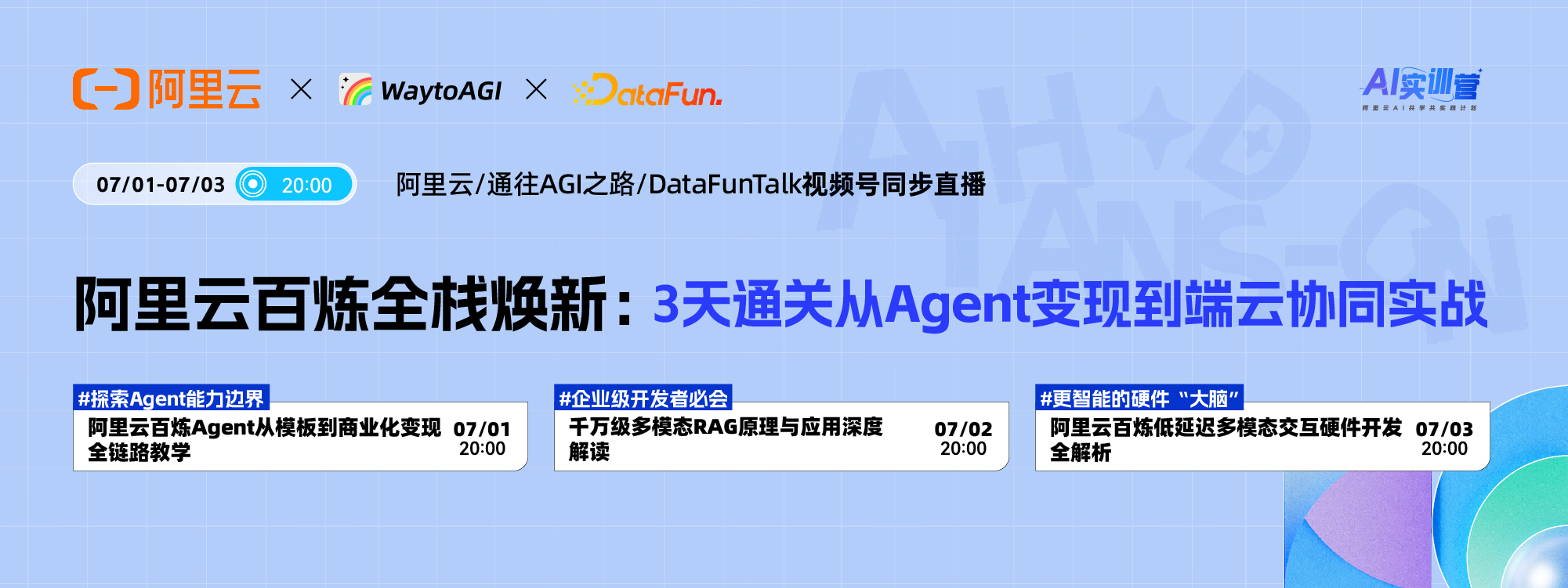April 26 is World Intellectual Property Day. Many people may think that it has nothing to do with software development, but in fact, most open source software is subject to intellectual property law Copyright Protection of.
Although open source software opens source code, users must abide by the open source agreement (also known as Open Source License) Otherwise, it may constitute infringement and cause a lawsuit.
With the rapid increase of computer software, its copyright protection becomes more and more important. Also on the 26th The Amendment to the Copyright Law of the People's Republic of China (Draft) was submitted to the 17th Session of the Standing Committee of the 13th National People's Congress for deliberation. There are many places in the amendment Correction directly related to computer software : For example, the lease right in Article 10 clearly includes the right to the original or copy of computer software; In the revised Chapter V "Protection of Copyright and Copyright related Rights", Article 48 adds the regulation on testing the complete performance of computers and their systems or networks.
Although the amendment has not been finalized, it also shows the trend of strengthening the legal protection of software. Today, we will talk about some rights issues involved in the development and use of computer software, as well as the source of these issues and current new disputes.
Copyright and Copyleft: open source copyright and open source agreement
When it comes to "Copyright", you may also think of the "Copyleft" anti copyright idea proposed by RMS, the father of free software. "Copyleft" was originally born to oppose commercial software, but it is not a waiver of copyright. "Left" in "Copyleft" does not mean "reserved" in English, but refers to "Left", which has a mirror relationship with "Right" in "Copyright".

The difference between the two can be summarized as follows: "Copyright" refers to Software Copyright and others All rights belong to the software author place private , user only yes use Rights, No, his Such rights as copying, re modifying and publishing 。 The feature of "Copyleft" is that only the copyright belongs to the original author, and all other rights can be shared with anyone.
First of all, computer software authors can enjoy the copyright "Copyright" of their own works.
Originating from the early information age, copyright originally refers to the right of printing and publishing, which is the right of copy promoted by the invention of printing. Later, with the development of science and technology, the variety gradually increased, and gradually began to protect the author's rights of literary works, the author's performance rights, and so on. In 1994, computer programs were explicitly proposed to be protected as literary works In 1996, this provision was implemented globally by the World Intellectual Property Organization.
Note: On April 15, 1994, the contracting parties of the Uruguay Round of GATT signed the Agreement on Trade Related Aspects of Intellectual Property Rights (TRIPS) in Mara. Article 10 of the TRIPS stipulates that "computer programs, whether original data or physical codes, shall be protected as literary works in accordance with the Berne Convention (1971)."
Article 4 of the World Intellectual Property Organization Copyright Treaty (WTC) adopted by the World Intellectual Property Organization on December 20, 1996 clearly stipulates that no matter how the computer program is expressed or expressed, it is protected as a literary work within the meaning of Article 2 of the Berne Convention.
This provides a unified standard and basis for international computer software copyright protection.
Secondly, the author of open source software, while possessing the copyright You can freely decide how to share your works with others, which is the concept advocated by "Copyleft" , which is also protected by the open source license agreement.
"Copyleft" is usually translated as "copyright", that is, through the form of license, to supplement and assist the insufficient copyright authorization, which is equivalent to a contract of rights and obligations. RMS created the GNU project in September 1983 and issued the GNU Declaration in 1984, attacking closed source behavior and creating the word "Copyleft".
The idea of "Copyleft" originated from RMS's view of intellectual property - he believes that intellectual property is a kind of social empowerment, and the obligee should be allowed to freely transfer software rights through contract, such as the right to copy, modify, and redistribute. So RMS proposed that, On the basis of recognizing the copyright, free software can share other rights of the work with the public through a license agreement.
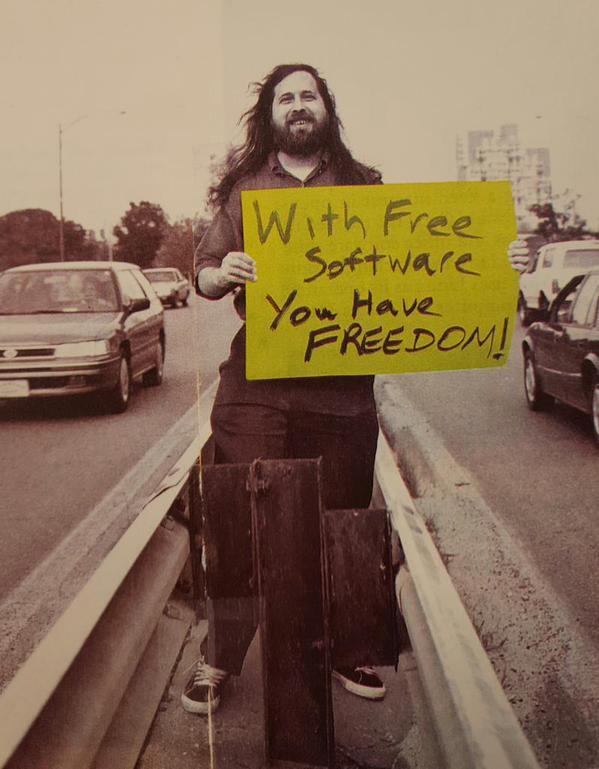
In 1989, RMS and a group of lawyers drafted the world's first open source software agreement, the GNU General Public License (GNU GPL). The preface of the certificate reflects the idea of "Copyleft".
First, recognize the copyright of software; The second is to provide a license agreement to obtain legal permission for copying, publishing, and modifying. Users can obtain the rights that the obligee waives through the license, but they must also comply with the provisions of the license to exercise them. If they do not comply with the provisions of the open source software, they are infringing the copyright of the open source software, and their copyright owners have the right to require the other party to stop the relevant acts and others.
So far, the word "Copyleft" has an actual carrier. This is also the source and basis of legal ideas that open source license agreements can protect the copyright of open source software authors and provide developers with the right to modify and redistribute.
Development of open source software and protocols
GPL based on the idea of "Copyleft" is now one of the most widely used licenses.
Under the premise of open source code, this license almost restricts users to the "maximum extent" - it not only requires users to open source the software they modify again, but also if users add the software under the GPL license to proprietary software, then all the newly combined software should also be applicable to GPL Licenses, that is, all software in the portfolio must be open source.
Therefore, GPL is called a license with "infectivity". More and more supporters of open source software believe that we should move closer to a more relaxed license agreement and should not make too many restrictions on the license agreement.
However, RMS believes that GPL really protects the freedom of all users. Because the GPL protocol can regulate users who use open source software to continue to open source, thus maintaining the freedom of open use of source code.
RMS is one of the leaders of the free software movement, known as the "father of free software". In addition to organizing people to draft the GPL agreement, his most talked about achievements include the creation of the GNU project and the establishment of the FSF Free Software Foundation. Now we often refer to Linux kernel plus GNU suite, namely GNU/Linux, which is the most widely used underlying operating system in the world, especially in supercomputers. RMS once asked the media to call the operating system "GNU/Linux" instead of Linux when interviewing him.
RMS is dedicated to liberating software, and has been committed to promoting software and world freedom, which makes outsiders think that he is stubborn and eccentric. Others asked him what he had gained from participating in the free software movement for many years. He said, "What I am more interested in is what the world has gained. I am very proud of my life, because half of my life is fighting for freedom and resisting people from doing things that are not free, although we have not yet reached the goal of victory."
In the eyes of many developers, this "victory goal" is unrealistic. In 1998, Eric Raymond published the book Cathedral and Market, which laid the cultural theoretical foundation for open source. Raymond and his followers believe that when RMS and FSF promote free software, they are deeply influenced by ideology and are out of touch with reality. In order to make free software as successful as possible, we should focus on providing practical value of source code, rather than focusing too much on sharing and moral philosophy.
Soon, Raymond invited a dozen famous members of the free software community to a meeting (excluding RMS, of course), and decided to replace "free software" with "open source software". In 1998, Raymond and Bruce Perens established the Open Source Promotion Association - OSIA. This organization later led the open source movement and defined open source software, which also standardized the license agreement:
OSD : Free re release; Redistribution in the form of source code; Derivative works, that is, using the same open source software protocol, can be compatible between different protocols; The integrity of the author's source code. The program modified by the author is distinguished from the original by different version numbers. The software user has the right to know who the author is; No discrimination against individuals or groups; Open source software programs can be used in any field to redistribute the license agreement, and new software cannot be added with new terms; The license shall not only be used for specific products; The license shall not restrict other software; The license agreement must be technology neutral.
With the expansion of the open source movement and the clarity of the definition of open source software, the promotion and protection of license agreements on open source software have become increasingly prominent, and their types are also increasing. Wei Jianfan, the translator of Cathedral and Market, said in an article recently Mechanism and function of license :
I allow you XXX, I allow you XXXX, you can XXXX, but you must XXXX, if you XXXX, you must XXXX, by the way, I am not responsible for XXXX.
If you agree, use it. If you disagree, don't use it. If you use it, but violate the requirements of the license, I may sue you!
Recently, there was a computer software copyright lawsuit in China, involving open source software and license agreements. December 2019, Beijing High People's Court against the defendant Grapefruit (Beijing) Technology Co., Ltd The final judgment was made on the dispute between Youzi (Beijing) Mobile Technology Co., Ltd. and the plaintiff Digital Paradise (Beijing) Network Technology Co., Ltd. over the infringement of computer software copyright.
The reason is that the APICloud software of the two defendant companies copied and modified three plug-ins in the plaintiff's HBuilder software of Digital Paradise, which adopted the GPL protocol.
In the end, the court found that the APICloud software of Youzi Technology Company and Youzi Mobile Company copied and modified three plug-ins in the HBuilder software of Digital Paradise Company, which infringed the copyright owner Digital Paradise Company's rights to copy and modify software works, and ordered the defendant to stop the infringement and compensate 710000 yuan. This case is the first case of China's GPL litigation, and its judgment is considered to be against Litigation Practice of Open Source Software yes It is of great significance, which has a high reference value for the subsequent trial of similar cases, and also has guiding significance for domestic developers to use open source software.
Internationally, the legal effect of open source license agreement was recognized earlier in actual cases. In 2008, the United States Court of Appeals for the Federal Circuit first asserted the copyright agreement of the open source license in its judgment. The plaintiff Bob Jacobsen released his own open source software using the Artistic license. The defendant Matthew Katzer used the software, but failed to perform the copyright declaration obligation specified in the license. In the end, the defendant was found to have violated the copyright of the plaintiff by violating the Artistic license.
Declaring the author's copyright can basically be called the "entry level" agreement of the open source license. On this basis, the license also stipulates whether users can take it for commercial use, whether they can market it in the name of the original author, and so on. Previously, some people would like to introduce several popular licenses Made a division :
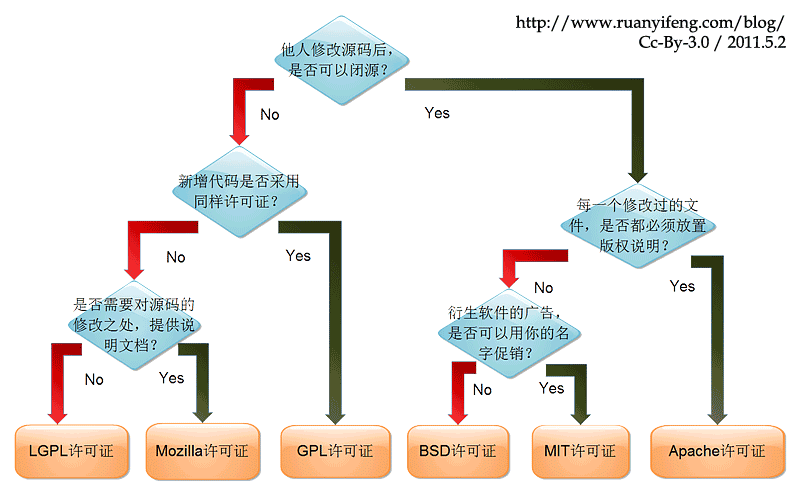
The licenses in the figure above are only popular at present. In addition, the licenses that have passed the OSI certification are Nearly 100 . A survey shows that licenses are gradually considered to be when developers decide to use an open source project Most important considerations , because no developer is willing to start using new software packages without knowing how to develop next.
The diversity of license types and regulations has led to the complexity of software compliance. However, there are already some tools that can initially reduce this threshold, such as ACT, a license usage specification tool launched by the Linux Foundation, and the license guidance function of Gitee.
Some disputes
In the process of software development, many disputes have arisen around the legal protection of software.
On the one hand, what rights and obligations should be stipulated in the license, and whether it should be relaxed or restricted, has been widely discussed. On the other hand, whether people should apply for a patent for the design idea of software has also triggered a confrontation between developers.
With the increasing types of licenses, people are increasingly eager for a more relaxed development environment and simpler agreements. A large number of software has moved from restrictive licenses to loose licenses. Blackduck data shows that in the six years from 2009 to 2015, the share of relaxed MIT licenses increased by 15.7%, and the share of Apache increased by 12.4%; The share of GPL v2 and v3 decreased by 21.4%. According to the license usage report released by GitHub in 2015, The usage rate of MIT protocol is the highest , A study two years ago also concluded that Same conclusion 。
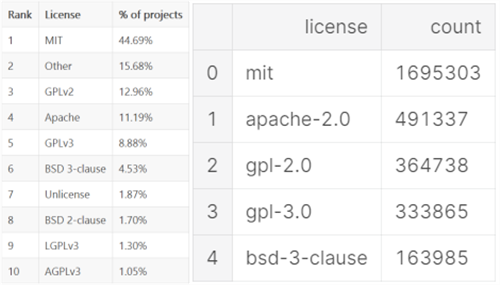
However, the pursuit of relaxation has brought new problems.
MIT is now the most widely used and relaxed license. Developers can freely use, including selling source code, as long as they retain the copyright and license of the original author. At this time, the original developer may face the dilemma of "others can take my software out for sale, and what's the use of my copyright". At this moment, it may only be annotated with the ideal of "freedom and sharing". If you want to avoid this situation, developers can change the stricter license agreement, or do not open source.
In addition, in recent years Open source companies are "parasitized" by cloud vendors The situation of, Cloud vendors directly regard the open source capabilities of open source vendors as business services in the cloud environment, instead of giving back to the open source community, squeezing the business of open source vendors, resulting in their survival dilemma. this It forces many open source software to change from loose license to more strict agreement, or even close source directly.
What's more, it is believed that open source software should break away from the existing copyright law and have its own Open Source Law: the intellectual property law based on copyright law is the product of the post industrial era and the pre information era, which gives people the property right to monopolize the information they create - films, software and other works, inventions and other technical solutions, product designs. However, the significance of software existence should be as a tool to solve practical problems. The real core characteristics are instrumental and functional rather than ostensibly creative. At this time, the Copyright Law is no longer applicable, but the Open Source Law should be newly established.
In fact, in addition to copyright and license, some software, especially commercial software, can be protected by patent law at the same time. According to Chinese laws, computer software patents The protection period is 20 years from the date of application. The term of copyright protection is the life of the author plus 50 years after his death; For the works of legal persons and other organizations, the term of protection of relevant copyright is 50 years according to the law.
Different from the protection of software itself by copyright, the protection of computer software by patent is reflected in the design idea of protecting software. For example, a software idea can be realized through different programming languages. Copyright protects the entire set of programming that has been written, while patents protect the ideas behind programming languages.
Therefore, a software can enjoy both copyright and patent rights. Open source software can also apply for patents for software design ideas before open source.
Some open source agreements allow open source software to enjoy patent rights, as Mulan PSL v2 Article 2 provides that: Each "Contributor" grants you a permanent, global, free, non exclusive, irrevocable (except for revocation in accordance with this clause) Patent license , For you to manufacture, entrust to manufacture, use, promise to sell, sell, import its "contribution" or transfer its "contribution" in other ways... Apache 2.0 and other open source agreements also have similar provisions, while some agreements such as MIT do not involve patent issues, and whether there are implicit patent restrictions remains to be answered.
The process of applying for software patents is more complex, but its laws are more or less, which causes greater resistance to software development and sharing, thus giving birth to the movement of anti software patents.
Proponents of anti software patents believe that software innovation also It does not need external force to push That is, there is no need for patent law to stimulate innovation.
This also leads to the focus question behind the above controversy - what kind of intellectual property protection can best promote the innovation and development of the entire computer software world, rather than just focusing on the present or the vested interests of an individual?


